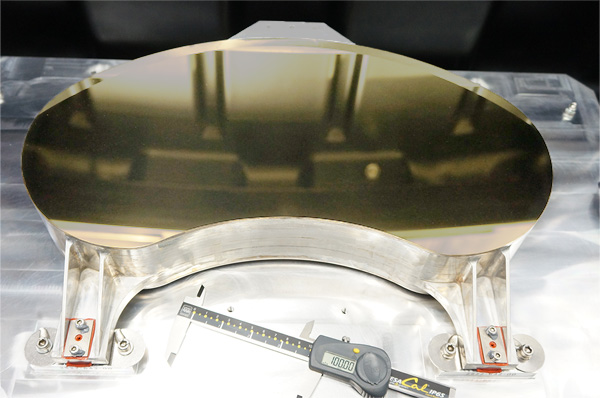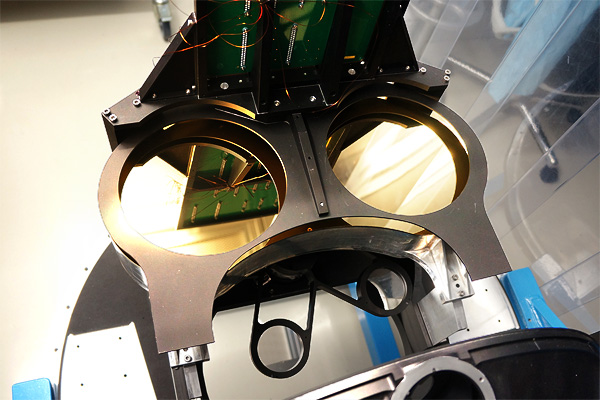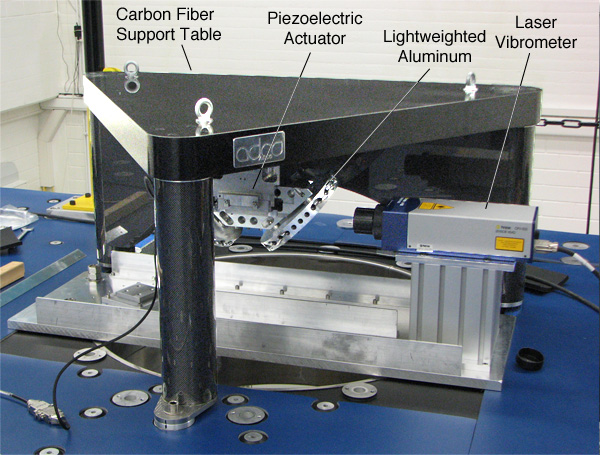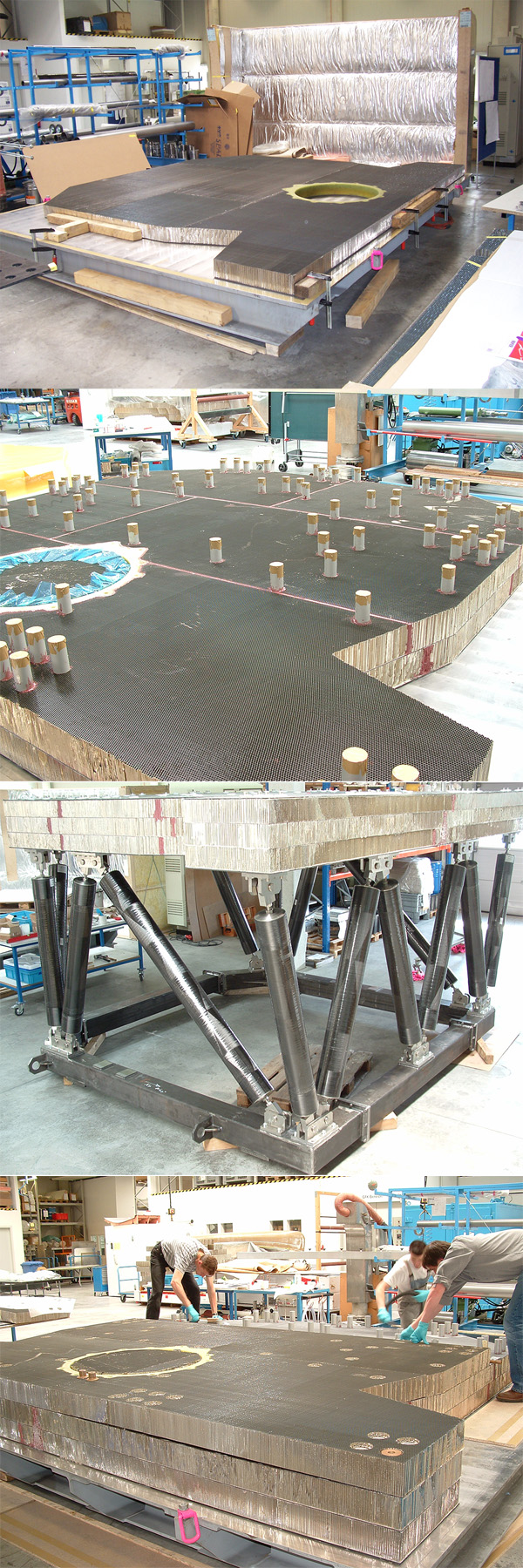LINC-NIRVANA Opto-Mechanics
Introduction
LINC-NIRVANA (LN) is the near-infrared, high spatial resolutionimager with Multi-Conjugate Adaptive Optics (MCAO) for the twin, 8.4-m Large Binocular Telescope (LBT). LN uses up to twenty natural guide stars to deliver a very large (2 arcminute) diffraction limited field of view. In many ways, LN is the first instrument for an extremely large telescope, and hence it poses technological challenges in many disciplines, including opto-mechanics.
Cryogenic Camera
Nowhere is this challenge more clearly exemplified than in the design of the cryogenic camera system. Because LINC-NIRVANA must deliver a diffraction-limited image in the near-infrared over a panoramic field of view, the optics must be large (ca. 50 cm diameter), cold (-210 °C), and of very high quality (ca 20 nm errors per surface). Many materials shrink substantially between room temperature and the cryogenic conditions inside an infrared camera, thereby inducing aberrations, internal stress, and changes in focal length.
To address these challenges, LN’s cold optics are fabricated from high purity 6061-T651 aluminum, thermally matched to the rest of the cryogenic components. The structure is therefore homologous, meaning that it changes dimension uniformly with temperature and can therefore be assembled and aligned warm, then used cold. The optical surfaces are single-point diamond turned and post-polished prior to receiving a high reflectance gold plating.


The primary mirror of the cryogenic camera (top) integrated with a mask corresponding to the entrance apertures of LBT (bottom).
Piston Mirror
Optics and mechanics work hand-in-hand in the LINC-NIRVANA Piston Mirror. This device consists of a pair of light-weighted, diamond-turned aluminum, 45° mirrors mounted back-to-back. The Piston Mirror moves back and forth, eliminating any residual time-of-arrival differences (“piston”) between the wavefronts coming from the two telescopes, thereby permitting coherent, interferometric imaging. To achieve the needed performance under dynamic conditions, we developed a lightweighted mirror out of a unique, thermally matched aluminum alloy (patent DE 10 2005 026 418).Due to the geometry of the LBT and LN’s field-of-view, there is no location in the optical path with a diameter smaller than 130 mm. This led to a component with elliptical active surfaces that are ca. 200x150 mm and a total weight in excess of 3 kg.
Moving the Piston Mirror with high speed and fidelity is not easy, due to structural resonances at lower frequencies. This necessitated modification of the carbon fiber support table and led to a focused development of control strategies. The outcome was a hybrid feedback – feedforward scheme that uses the measured performance of the entire system to reach the science requirement of 6 millisecond response time.

Characterization and optimization using a laser vibrometer and a dynamical model of the Piston Mirror (identical to the actual optic except for the polished surfaces).
Optical Bench
LINC-NIRVANA is a large instrument: roughly 5 x 4 x 4.5 meters and weighing 10 tonnes. It must also operate over a wide range of temperatures and orientations ranging from zero to 70° zenith angle. To achieve its target performance, the support structure must maintain the 3-dimensional spatial positions of the optical components fixed to within a small fraction of a millimeter.
The LINC-NIRVANA optical bench is the backbone of the instrument. It consists of a unique sandwich of high tech metal and composite materials, yielding a structure that is light, stiff, and immune to temperature variations. The LN team worked with Schlossmacher GmbH to develop this technology for multiple components within LN (US patent 8,303,313).
The breadboard consists of 3 carbon fiber reinforced plastic (CFRP) plates separated by two 20-cm thick layers of aircraft grade honeycomb aluminum. Almost 250 individual metal inserts provide mounting points for the LN opto-mechanical components. Fourteen CFRP legs, ranging from 2 to 3 meters in length, support the bench above a conventional steel base ring. The overall structure weighs only 1250 kg and has almost zero coefficient of thermal expansion at its operating temperature.

Assembly of the CFRP / aluminum sandwich for the LINC-NIRVANA optical bench. Note the humans for scale.
